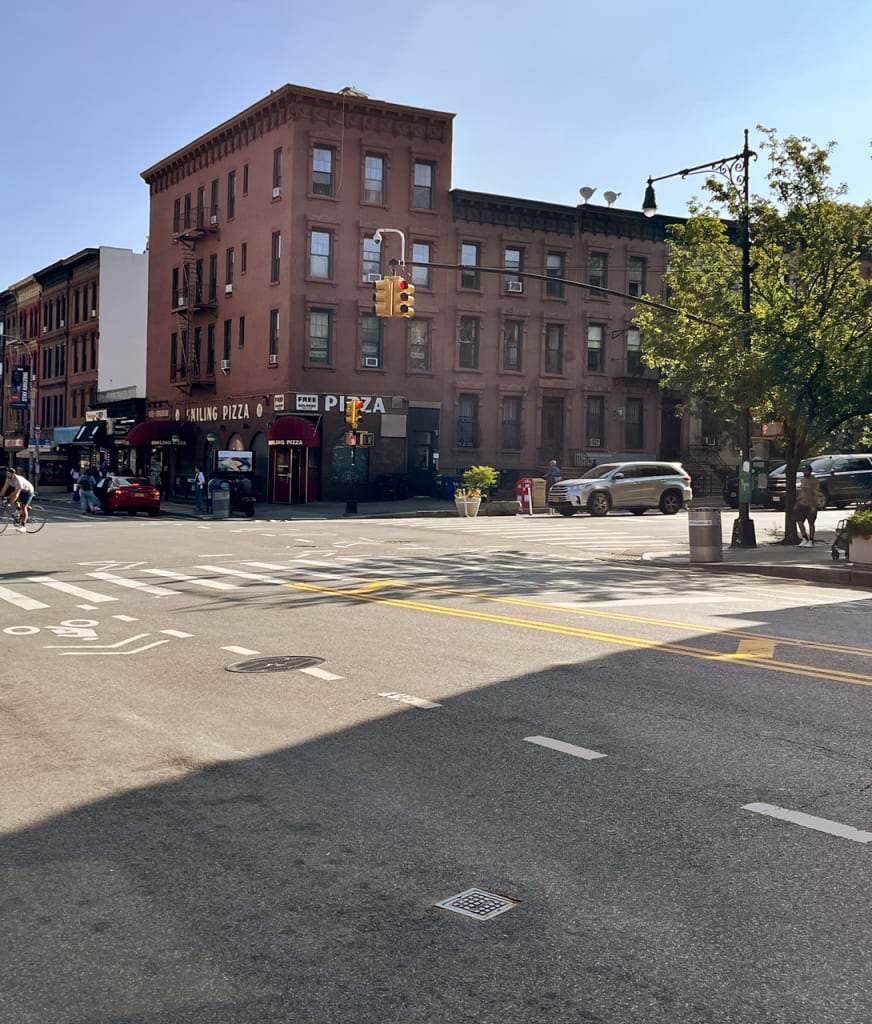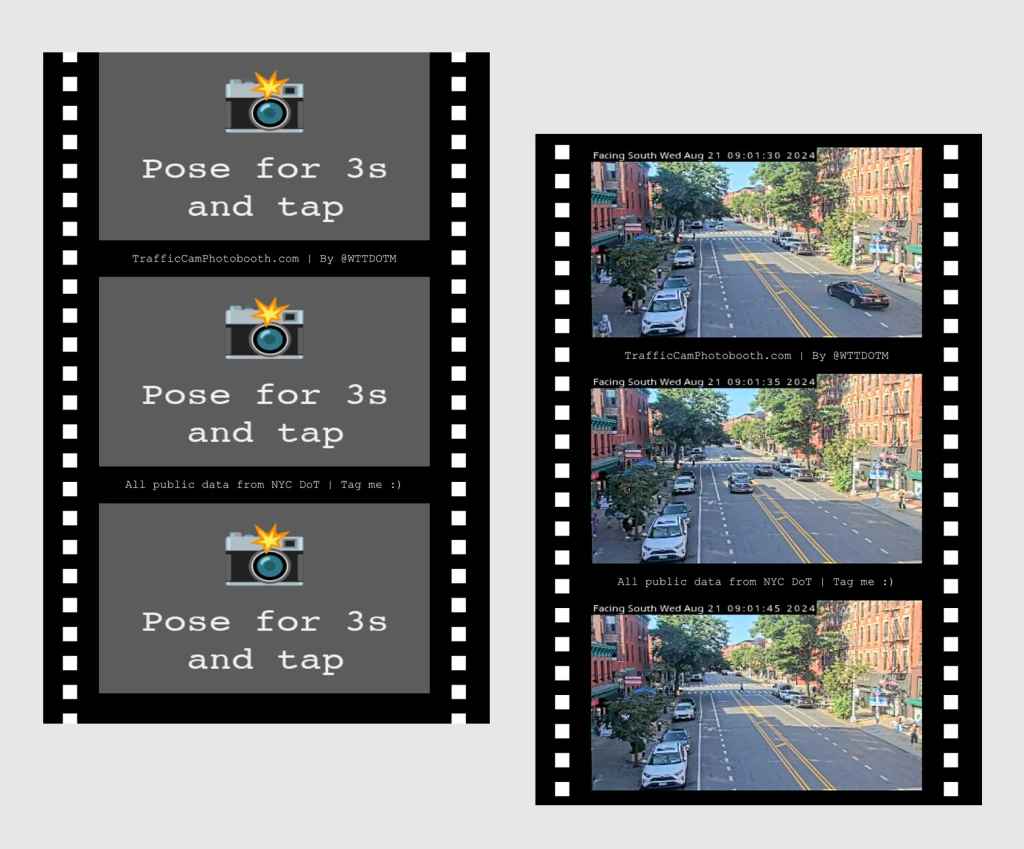I am standing on the corner of a busy intersection in Brooklyn, and I am taking a selfie. Except instead of using my iPhone’s front camera, I am using a traffic camera.
Let me explain. New York City’s Department of Transportation maintains a network of about 900 traffic cameras dotted across the city. The DOT uses these cameras to monitor traffic flow. But one artist has now turned them all into digital photobooths. All you have to do is visit a website called Traffic Cam Photobooth, find the camera that’s nearest to you, and go strike a pose from the sidewalk. The website will show you what the camera sees every two seconds. Once you see yourself in the frame, you can tap the screen and take what may well be your quirkiest selfie to date.
Clik here to view.

Traffic Cam Photobooth is the brainchild of Morry Kolman, a Brooklyn-based digital artist with a self-professed fascination for “the types of images that computers make for us” and a track record for the kind of idiosyncratic websites you would’ve found on the now-defunct Stumble Upon (which was reborn as Mix in 2018).
Clik here to view.

Kolman’s site went live about two weeks ago, and already it has gone viral, with 160,000-plus visitors and more than 320,000 photos taken. (This is the only information Kolman has about his visitors, as the website doesn’t track your location or save your data.) Part of the appeal, according to Kolman, comes from the eccentric experience and unusual selfie UX. “Everybody can take selfies. Everybody has a phone. This is like a new way to look at yourself,” he says.
But the project has much more serious undertones: to raise awareness about surveillance cameras, and to prove they’re taking photos of us . . . all the time, whether we’re posing or not.
Traffic cameras are pervasive, but they are just a few drops in an ocean of surveillance cameras strewn across the city. According to a recent study, New York City has 71,000 surveillance cameras—or almost 236 cameras per square mile. (For comparison, Shanghai has an estimated 5,000 cameras per square mile, while Osaka, Japan, has just 4.)
Government officials often point to the remarkable benefits that come with a robust surveillance system, also known as closed-circuit television (CCTV). Perhaps the most-often-cited success story is the 2013 Boston Marathon, where CCTV footage helped identify the terrorists behind the deadly bombing that took place near the finish line of the event. But many civil liberties and human rights advocates have raised serious concerns about the erosion of personal privacy that extensive surveillance can cause. In New York, for example, surveillance cameras vary from public to private cameras that are equipped with what Amnesty International has described as “invasive and discriminatory facial recognition” that the NYPD often uses to track people.
Kolman describes himself as “anti-surveillance,” but he knows that traffic cameras aren’t exactly “the bad guys.” NYC DOT’s traffic cameras provide only live feeds and do not record any footage, but as the artist puts it, “they are the easiest thing to point at” when developing a website about surveillance because their data is publicly available.
Building a traffic cam experiment
Traffic Cam Photobooth started as a challenge from a photography class Kolman was attending at the School for Poetic Computation, called Imperfect Pictures. The challenge was to make a picture without being the one behind the camera, which reminded Kolman about traffic cameras because while their goal isn’t to capture people on the streets of New York City, they still do.
At first, Kolman tried building a shortcut into his phone that would trigger a traffic camera to snap a photo of him anytime he walked by it, “like paparazzi,” he says. But when he posted about it on social media, he learned that people were actually eager to capture the photo themselves. So he built a simple website and gave people some helpful tips for a successful selfie, including “don’t get run over,” and “wear bright clothes.” (I succeeded at the first but failed at the second, which led to a pretty pitiful selfie depicting nothing but a regular street and a blurry dot on a sidewalk.)
For now, the site is mostly useful to New York City dwellers, but Kolman is considering expanding to other cities, both in the U.S. and abroad. He built the website on an open-source platform so anyone, anywhere can plug in camera data from other cities. In fact, if you zoom out enough on the map, you will notice a lone red dot on the other side of the Atlantic, where someone has already added a traffic camera in Derry, Ireland. There are no selfie-takers in sight just yet.